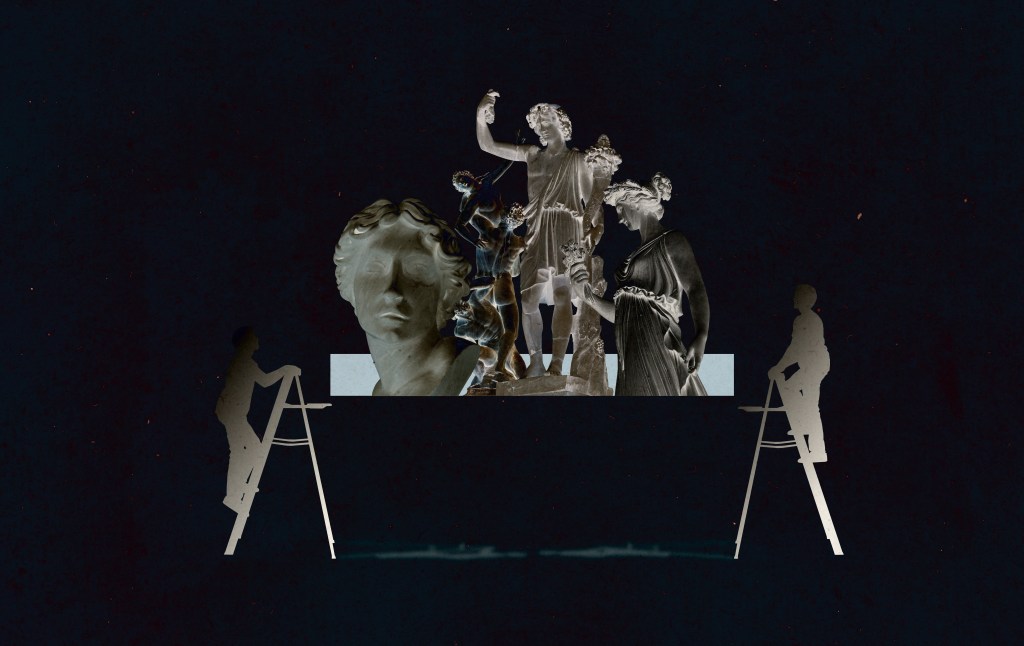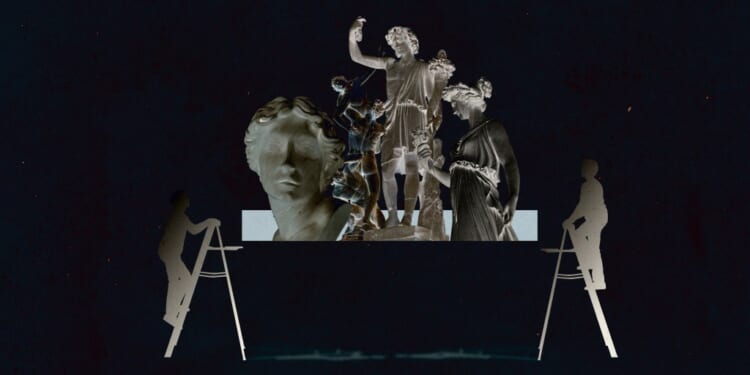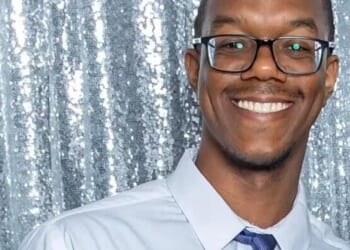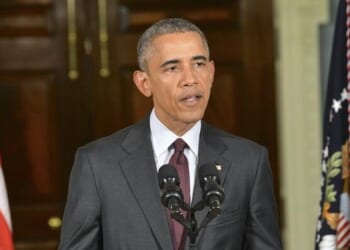
Ideology and reality are often in a shaky relationship. Our politics reveal the division most starkly, with the preoccupations of idealists diverging further and further from the country’s most pedestrian and pressing issues. Embellished stories have a click appeal—“The schools are transing your children!”; “You can’t walk the streets of New York without being accosted!”; “The immigrants are eating the cats!”—that society’s daily doldrums do not. Prices are up, the school district is out of money, the infrastructure is crumbling. It’s easy to forget that it’s mundane problems, not sworn enemies, that most often hamper the realization of our ideals.
Ideology in the academy ought to work differently. There, distance from reality is a given—even a boast. There are parts of the “life of the mind” that thrive only when liberated from the constraints of the real world. Academic discourse can issue in daring literature, art, and political expression. Unfettered by pragmatism, it can push the boundaries of acceptability, challenge conceived wisdom, and critique power structures. These things are essential to a free, self-questioning society.
But sometimes that distance from reality can go too far. The discipline called classics—the study of ancient Rome and Greece, and their civilizations and languages—is an area of study rife with theoretical arguments and often abstract ideas, given that its languages and cultures live only in memory. Often viewed as a vestige of the elite, and most often taught to future presidents and prime ministers in expensive private schools, classics is, by definition, Western-centric. And it has come under heavy scrutiny from certain academics over the last few decades.
One recent example of that scrutiny is a volume called Critical Ancient World Studies: The Case for Forgetting Classics, published by Routledge last year. This book comprises a series of essays, which together advance the case for overthrowing many of the discipline’s norms. Classics is a field of study that, the introduction argues, “is formulated (both from inside and outside) so as to naturalise a hierarchical, white supremacist origin story for modern Europe (and by extension the United States).”
But the editors of Critical Ancient World Studies (CAWS) go further. The very ideas and practices that characterize the discipline are themselves “in support of white supremacist, ableist, Islamophobic or otherwise hateful aims.” The scaffolding of the discipline should therefore be “forgotten,” and rebuilt under an entirely different value system. As for what kind of new system the authors have in mind, it’s hard to say. They call their fellows to dismantle, unpick, and “unmake” what comes before, but write less about what they might erect in its wake.
The deconstructive impulse of CAWS extends not just to hackneyed concepts from imperial Rome, but also to initiatives that attempt to make classics more accessible to students from all backgrounds. The editors write that “access projects often rely on precisely those ideological and methodological orientations that exclude under-represented groups to make the case for the subject.” The charity Classics for All comes under fire for its “impassioned vaunting of the western civilization narrative, affirming the relevance of the classics on their website on the basis that ‘it shows us why we in the West are as we are.’”
The volume swiftly moves on to highly esoteric academic arguments, dedicated in the frontispiece to “all those that Classics in its current colonial formation has excluded, othered and dehumanised – with love and hope for a different future.” The overall message? That classics is a fundamentally exclusive and prejudicial area of study, and readers of the volume must do their part to reshape the discipline with inclusion at its center.
But the substance of the volume calls into question the idea that its suggestions could be genuinely inclusive. One chapter—“Queer Time, Crip Time [referring to disability studies], Woman Time, Sick Time, Sleepy Time, Muslim Time… Remaking Temporality Beyond ‘the Classical’”—suggests that nothing short of dismantling “linear time” will do. Time “supports exploitative capitalism, as well as settler colonialism” and should be understood as part of the “structures of domination” denounced by the authors of these essays. Once time is overturned, and “chrononormativity” is rejected, “CAWS practitioners can be intentional in organising their own temporalities.” This is the tone throughout.
It’s difficult to understand how such wildly theoretical claims, accessible only to academic specialists, might promote the apparently desired egalitarian revolution in classics. Somewhere in the midst of the jargon—“chrononormativity,” etc.—a question emerges in the mind of the reader. Are “structures of domination” really the reason that classics remains inaccessible to a wide array of students?
Who studies classics today? Fewer than 30 U.K. universities offer degrees in classics. About half of those—mainly the newer universities—offer only ancient history and classical civilization options with little or no linguistic element. About 350 private schools and 280 state schools in the U.K. offer classics of some sort at the secondary level, ages 11 to 18. As veteran classics teacher Steven Hunt points out, “This isn’t bad. The number of students doing Latin has stayed at about 9 to 10,000 for the last 25 years …. There’s a very, very slow drain but it’s not particularly spectacular.” And many of the schools offering these courses serve demographics very different from the stereotype of hegemonic white maleness the authors of CAWS denounce.
Indeed, when asked about the barriers involved in classics education in the U.K., classics teachers working in the public sector tell a different story. Their concerns are rather more pedestrian than “imperialist extraction” in the cartography of the ancient world, or the “normalisation of a nationalist methodology” in the classics curriculum. The hurdle they identify is not that the discipline is called “classics” rather than “Critical Ancient World Studies.” It’s that public schools often lack the resources and time to teach Latin and ancient Greek.
Hunt taught classics in state comprehensive schools in the U.K. for 20 years and is the author of Teaching Classics Worldwide. For Hunt, the challenge of teaching the classics in non-private schools “are pretty much the same across the entire world, which is that STEM is the subject area in which schools and kids are being increasingly turned towards. And if you’re turning kids towards STEM, then they can’t do other subjects because there simply isn’t space on the timetable.”
In other words, “chrononormativity” does feature in the difficulties of making classics accessible, but not because “the goal of Western linear time is always to lock Black bodies out of the Future and remove them from the timeline of civilization.” It’s just that there are not enough hours in the school day to teach Latin. As Hunt puts it, “there’s a very straightforward practical reason for problems and access to classics, which is not to do with the classics themselves. It’s to do with the range that kids have access to because of the nature of the timetable.”
The same message comes through in other areas of classics teaching. Lorna Robinson founded the Iris Project, an educational charity promoting ancient languages and culture in U.K. state schools. She cites pragmatic challenges as the main force keeping classics confined to a smaller group of privileged students.
“From what I’ve seen over the years, practical issues such as there being provision at a school that is sustainable and supported, funding, encouragement, feel like the most important thing for increasing inclusivity” Robinson says. “But I do think this comes hand in hand with making the ancient world and languages relevant, engaging, and inclusive in the way they are taught. The two certainly go together.”
This two-tiered approach—support for teaching classics, combined with academic efforts to present the classics curriculum in ways that make it relevant to diverse learners—recur in the responses of classics educators to the provocation of CAWS. Far from wishing to dismantle the discipline and start over, teachers express optimism in the efforts that they’ve already made to bring classics into the modern classroom.
Caroline Bristow is the director of the Cambridge Schools Classics Project, an educational project embedded in the University of Cambridge, which works to make classical education accessible to all students regardless of background. Under her direction at the CSCP and beforehand, Bristow has tried to make the classics curriculum accessible and relevant to students in a 21st-century context.
When she worked at the U.K. exam board OCR, Bristow added the Persians’ perspective to a unit called “The Invention of the Barbarian” which was an option for one of the final exams students take upon leaving high school. The section explored the way that ancient Greeks created ideas of “otherness” to shore up their own cultural cohesion. “It was one of my babies, I campaigned for that to go on,” Bristow said. “It’s an incredibly popular unit and apparently one that teachers really value teaching in multicultural environments because it’s digging into this idea that the Greek communities invented their idea of the Persians.”
Bristow is also interested in how violence against women and girls is taught in Greek myths. “I look at how we can embed modern messaging,” she says. “Not change the myths, but how the language we use in our speech around these myths can include survivors of violence who may be in our classrooms. … It’s basically consent education. How can we reinforce modern consent education when we’re talking about Greek myths that involve sexual violence?”
Reforms like this—real teachers thinking about how the ancient world opens up onto modern themes—make no appearance in Critical Ancient World Studies. The CAWS project is indicting the discipline on charges of white supremacy, colonialism, heteronormativity, and patriarchy. The reality—that teachers on the ground are doing the quiet work of change—would confuse the message. If the argument is that the whole thing must be “forgotten,” it’s no good pointing out that creative and committed teachers are finding ways to remember our classical heritage and still make it live for children today.
“What’s fascinating is that classics has been having these conversations loudly and softly, aggressively and calmly, for 60 years,” Bristow said. “And that is something that makes the discipline stronger, healthier.”
“Loudly and softly, aggressively and calmly”—a wide range of voices has contributed to the case for classics over the decades. The risk of the CAWS approach is that educators working in good faith end up lumped together with methodologies that have been deemed fundamentally oppressive—because they don’t use the language of critical theory, or because they make the fatal mistake of claiming that understanding the classical world might be a central part of understanding Western civilization.
To study ancient civilizations, though, is not to automatically exalt them. Hunt says that in his experience, there has been a big effort to broaden the sorts of texts that are available to students studying the classics. “We’re trying to get people to look at these difficult texts and not brush them under the carpet, nor are we trying to glorify the ancient world,” says Hunt. “In the last five, six years, there’s been a really conscious effort to broaden the appeal of the canon, to choose wisely from the material that’s available.”
Bristow maintains that it’s possible to strike a balance between appreciation for the cultural innovations of the ancient Romans and Greeks and critique of the problematic aspects of their cultures. “I can teach my students things like how awesome the Roman science of concrete is, but that doesn’t mean also teaching that it’s fine that these amazing buildings were constructed by slaves … if that’s me ‘tearing down a cornerstone of Western civilization,’ I’ll live,” she says.
In addition to widening the curriculum, there are efforts to shake up the way classics are taught. King’s College London is one of those universities that does not require students to learn Latin or Greek in order to study classics—less a sign of decline than a step many universities have taken to open up the discipline. Emily Pillinger, reader in Classics and Interdisciplinary Humanities at King’s, has led a project that explores Greek myths through contemporary music composition. In her classroom, Pillinger also experiments with how to make Latin and Greek-based texts relevant to students in their own languages.
“Because we’re in London we have a wonderfully wide intake; we’ve got a lot of first-generation or second-generation immigrant families who do not have English as their first language,” Pillinger says.
Pillinger experiments with translating Greek and Latin texts into English, then asking students to translate them into their own first languages. “Then we record it, so we have a kind of sonic record …. The feedback I get from students is so interesting,” Pillinger says. “They talk about what it means for them to take these texts and put them in a language where they can communicate, particularly with grandparents, about what they’re studying. Because generally there’s been very little overlap between their studies and their own heritage.”
In other words, the work of inclusion that CAWS champions is happening outside of the ivory tower from which they write. It is the quiet efforts of under-resourced teachers—“Mrs. Miggins in her broom cupboard with her three students on the lunch hour,” as Bristow described it—that is bringing about that change.
For hard-working educators in the state sector, it can feel like the CAWS ethos actually rewinds efforts to rehabilitate the classics for modern students. “We’re kind of shoveling the water out of the sinking boats and they keep on finding plugs in the bottom of the boat to pull out to see if the water will come up,” Hunt said.
This tension between the aims of university researchers and secondary school teachers may come down to the simple fact that, to put it crudely, in the world of research, sexier subjects sell. “These books can be very, very theoretical and research-based,” says Bristow. “Yeah, that’s probably how they got the funding.”
At best, the CAWS volume represents an important step toward disciplinary self-awareness: a welcome challenge to a field that may overlook its own injustices and lack of inclusion. An article in the Bryn Mawr Classical Review applauds the volume’s “collectivity and variety, its effortful interdisciplinarity, and its self-annotating, [and] self-critical practice.” Pillinger, of King’s College London, maintains that “these volumes should be out there and they’re really important to helping us stay on our toes in the discipline.” Bristow emphasizes that “these volumes existing is important; somebody needs to have that conversation in order to influence the discourse.”
But at worst, CAWS risks damaging a discipline with real, practical barriers to entry, when it insists on “chrononormativity” and “settler colonialism ” as the reasons why classics aren’t studied more widely. As Goerge Orwell wrote, “When there is a gap between one’s real and one’s declared aims, one turns as it were instinctively to long words and exhausted idioms, like a cuttlefish spurting out ink.” The heroes (and villains) of CAWS are confined to the world of ideas. The real heroes—the teachers—make no appearance in their vaunted pages.
Nor do all the historical examples of how the classics themselves have been symbols not of oppression but of liberation. As one reviewer of the CAWS volume points out, in “the former Soviet colonies Classics was not ‘systematically racist’ or ‘colonial’ … There is, for instance, Osip Mandelstam, for whom Classics provided the last refuge of inner freedom during the Soviet terror of the 1930s.” After composing poems that drew deeply on the classical world, Mandelstam “froze to death on his way to a Soviet concentration camp.”
The story of classics holds a lesson for our political moment. Underneath the noise, there is often less acrimony, controversy, and ill will than you might think. When pressed, people on all sides come out with moderate expressions of discontent in certain areas, and a surprising amount of understanding in others. But if our understanding of these ancient cultures is to be preserved, it is overwhelmingly practical problems that need to be overcome.
As a classicist might say: Res, non verba. Deeds, not words.

















